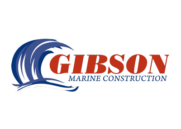When deciding which type of dock to install on your waterfront property there are some fundamental things to consider. You must know the difference between the types of docks available; fixed or floating, and whether or not you need an addition like a kayak dock.
Fixed docks are permanently attached to the seabed using pilings that will remain secured all year round. The docks are constructed out of pilings, framing, and decking; made from steel, wood, or concrete. Floating docks float on top of the water and are flexible structures. They rise or fall with the change in tide, which is the largest distinction between floating and fixed docks.
Floating docks do not have to be permanent structures they can be seasonal if they are located in colder climates where there may be ice. The docks consist of flotation units, a framing system, and decking made from wood, concrete, or steel. The floating structure is tethered to the seabed using vertical poles that keep the dock in place.
A kayak dock attaches to an existing dock or seawall, it is a smaller dock in which you can launch kayaks or paddle boards from. They can be floating or fixed and can contain launching stations for ease of use. Made from the same materials as a fixed or floating dock just of a smaller scale.
One of the main factors to consider when choosing a dock type is the water level. Floating docks rise and fall with the water level along with the boat that is attached to it. This allows for ease of boarding and disembarking because the dock moves with the boat and therefore the dock is always at the same level as the boat. This is great for areas that have large tidal variations throughout the days or seasons, such as costal areas. Having a floating kayak dock is most common because even a small change in water level could create difficulty when launching the kayak.
In contrast, fixed docks do not change with water level, which can create large differences between the elevation of the boat and the dock. Fixed docks are best where water level does not vary large amounts throughout the days, if the tide changes seasonally then it most likely will not create such a problem. Having a floating kayak dock attached to a fixed dock will allow the ease of boarding a kayak with the stability of a fixed dock.
A fundamental requirement of a dock is to disperse impacts from natural forces such as wind, waves, and currents. Floating docks have a built in flexibility, which allows them to accept loads from wind and currents by moving, although the movement of the dock can sometimes be profound in extreme weather. Also, since they are so close the water at all times, usually only a foot or two above they are susceptible to wave topping if the waves are large enough.
Fixed docks are not subjected to the same impact from wind and waves because they are often raised further from the water. The loads from waves and wind are taken directly by the pilings of the fixed dock because the fixed dock cannot move to absorb them. Kayak docks are most similar to floating docks, but don’t carry the same impact, as they are much smaller and more susceptible to change. The construction and design of docks over the year has made all docks less vulnerable to damage from natural forces.
Whichever you choose it is important to consider all factors that are specific to you and your location. If you have any questions about which type of dock is right for you, feel free to contact us.

